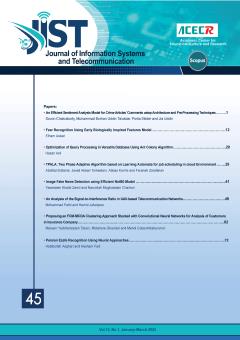In this paper, the statistical distribution of the received quadrature amplitude modulation (QAM) signal components is analyzed after propagation in a dispersion uncompensated coherent optical fiber link. Two Gaussian tests, the Anderson-Darling and the Jarque-Bera have
More
In this paper, the statistical distribution of the received quadrature amplitude modulation (QAM) signal components is analyzed after propagation in a dispersion uncompensated coherent optical fiber link. Two Gaussian tests, the Anderson-Darling and the Jarque-Bera have been used to measure the distance from the Gaussian distribution. By increasing the launch power, the received signal distribution starts to deviate from Gaussian. This deviation can have significant effects in system performance evaluation. The use of the Johnson s_U distribution is proposed for the performance evaluation of orthogonal frequency division multiplexing in an uncompensated coherent optical system. Here, the Johnson s_U is extended to predict the performance of multi-subcarrier and also single carrier systems with M-QAM signals. In particular, symbol error rate is derived based on the Johnson s_U distribution and performance estimations are verified through accurate Monte-Carlo simulations based on the split-step Fourier method. In addition, a new formulation for the calculation of signal to noise ratio is presented, which is more accurate than those proposed in the literature. In the linear region, the Johnson based estimations are the same as Gaussian; however, in the nonlinear region, Johnson s_U distribution power prediction is more accurate than the one obtained using the Gaussian approximation, which is verified by the numerical results.
Manuscript profile


